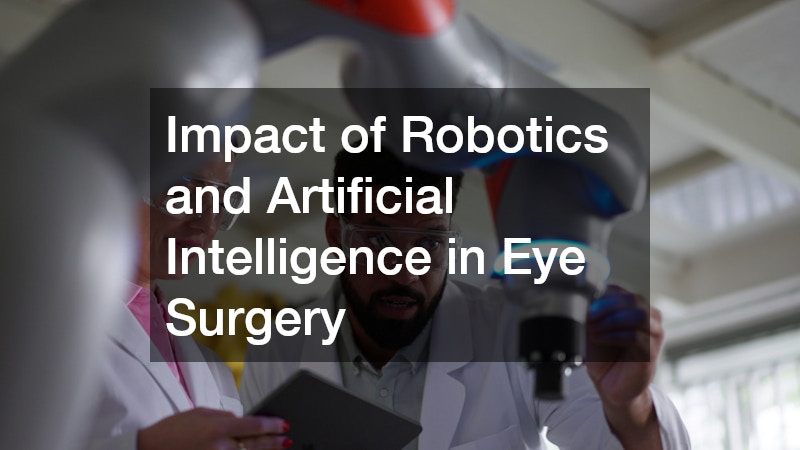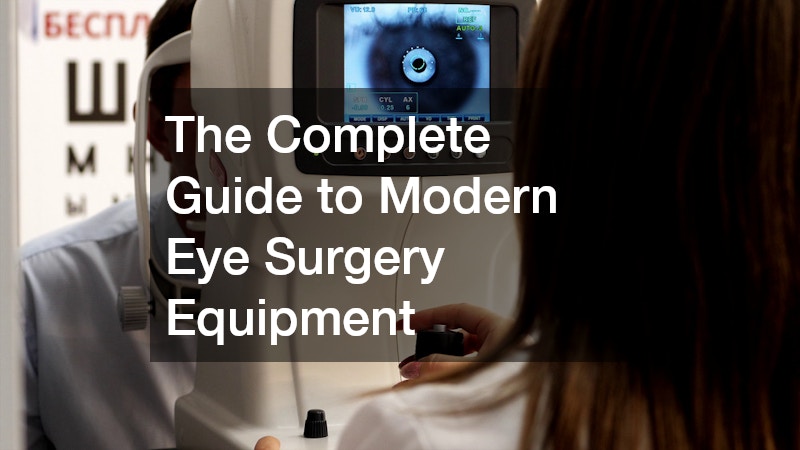In recent years, the field of ophthalmology has witnessed remarkable advancements, particularly in eye surgery equipment. Surgeons are now equipped with cutting-edge devices that enhance precision and efficacy, significantly improving patient outcomes. From laser technology to innovative diagnostic tools, modern eye surgery equipment continues to evolve, addressing diverse eye conditions and elevating the standard of care. This guide delves into the most critical advancements in eye surgery technology, offering insights into how these innovations continue to transform ophthalmic practices.
By understanding these developments, healthcare professionals and patients can better appreciate their role in promoting eye health.
Laser Technology in Eye Surgery
One of the most significant breakthroughs in eye surgery equipment is the refinement and widespread adoption of laser technology. Lasers are now integral to various ophthalmic procedures, providing unmatched precision and reducing the risk of human error. In corneal surgeries, for instance, laser technology allows for the meticulous reshaping of the cornea to correct refractive errors like myopia and astigmatism. The use of femtosecond lasers in cataract surgeries has also revolutionized the removal of the cloudy lens by making precise incisions. This advanced technology minimizes the recovery time and enhances the overall safety of surgical procedures, benefiting patients worldwide.
Beyond refractive and cataract surgeries, laser technology plays a crucial role in treating retinal conditions. Retinal lasers are used in procedures such as photocoagulation, which targets specific areas of the retina to treat conditions like diabetic retinopathy. This precision prevents further retinal damage and maintains the patient’s vision, illustrating the versatile applications of lasers in modern eye care. Additionally, advanced laser technology offers surgeons real-time feedback, significantly improving surgical accuracy during intricate procedures. Thus, the adoption of laser technology has undoubtedly set a new benchmark in eye surgery equipment, making it indispensable for contemporary ophthalmologists.
Advanced Diagnostic Tools for Eye Surgery
Modern eye surgery equipment extends beyond lasers, encompassing a range of advanced diagnostic tools vital for pre-operative and post-operative evaluations. One such innovation is optical coherence tomography (OCT), a non-invasive imaging technique providing detailed cross-sectional images of the retina. OCT has become invaluable in diagnosing and monitoring conditions like glaucoma and macular degeneration, allowing for timely and targeted interventions. By offering high-resolution images, OCT aids surgeons in planning precision surgery, ensuring optimal results. This diagnostic technology enhances the surgeon’s ability to assess and manage complex ocular conditions efficiently.
Wavefront aberrometers are instrumental in delivering customized refractive surgeries. Unlike traditional methods, wavefront technology maps the eye’s unique imperfections, resulting in a tailored corrective procedure for each patient. This level of customization is crucial in achieving superior visual outcomes, reducing the chances of post-operative complications, and improving patient satisfaction. The integration of wavefront technology into eye surgery equipment represents a significant leap forward, underscoring the importance of individualized treatment approaches in modern eye care. As these diagnostic tools evolve, they continue to enhance the precision and effectiveness of ophthalmic surgeries.
Digital anterior segment imaging systems have transformed pre-operative assessments by providing detailed visualizations of the anterior eye structure. These imaging systems facilitate accurate measurements, aiding in the selection of appropriate intraocular lenses for cataract surgery. By minimizing the risk of lens-related discrepancies, these tools ensure successful surgical outcomes and patient contentment. The advancements in diagnostic technology also extend to the realm of telemedicine, enabling remote consultations and evaluations, thus expanding access to expert eye care. As diagnostic tools become more sophisticated, they remain a cornerstone of modern eye surgery equipment, paving the way for continuous improvements in patient care.
Impact of Robotics and Artificial Intelligence in Eye Surgery
Robotics and artificial intelligence (AI) are emerging as transformative forces within the domain of modern eye surgery equipment. Robotic systems, such as robot-assisted surgery platforms, offer surgeons enhanced control and precision during complex procedures. These systems minimize hand tremors and allow for more intricate maneuvers, which are especially beneficial in retinal surgeries that demand exceptional precision. The use of AI in eye surgeries facilitates real-time data analysis and decision-making, streamlining the overall surgical process. By integrating robotics and AI, eye surgeons achieve unparalleled accuracy, which translates to improved surgical outcomes and quicker recovery periods for patients.
The advent of AI in ophthalmology extends beyond the operating room, encompassing diagnostic processes as well. AI algorithms analyze vast datasets to identify patterns and predict patient outcomes, aiding in early diagnosis and intervention. For conditions such as diabetic retinopathy, AI-driven diagnostic tools offer timely assessments, reducing the risks associated with late detection. Additionally, machine learning models continue to refine patient-specific treatment plans, optimizing individualized care in eye surgery procedures. By embracing these technological advancements, eye care professionals harness the full potential of AI, thereby elevating the standard of patient care in ophthalmology.


